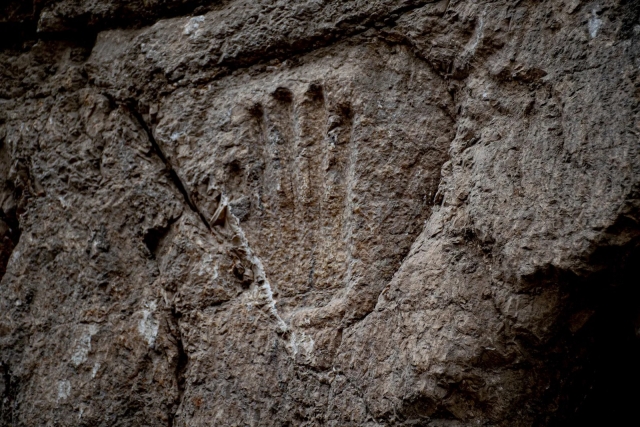Fragments of the fortifications of the ancient Jerusalem walls and a mysterious handprint carved into the rock were uncovered in archaeological excavations by the Antiquities Authority on Sultan Suleiman Street in Jerusalem.
The excavations, which were done in preparation for infrastructure and development work by the Moriah Jerusalem Development Company, revealed sections of the deep moat canal that surrounded the city in order to protect it, beginning in the 10th century AD, and possibly even earlier. In one of the sections, a carved palm print was discovered in the wall of the trench, the interpretation of which is unknown.
1,000-year-old Jerusalem Old City moat, carved handprint discovered https://t.co/aByFMnmifo
— All Israel News (@all_israel_news) January 25, 2023
Zubair Adawi, the director of the excavation on behalf of the Israeli Antiquities Authority, recently excavated the moat that is located directly under the modern street. According to Adawi, "People don't know, but this busy road goes over a huge moat. In fact, it is a huge trench, cut into the rock, that is at least 10 meters wide and from 2 meters to more than 7 meters deep at its deepest point. The moat ditch dates back to about 1,000 years ago, starting in the 10th century AD, and it surrounds the entire old city like a ring.
Adawi continued: “People know moats from movies and typical castles in Europe where it is usually filled with water . Here it was dry, but gentle - due to its depth and width, it was a serious obstacle that slowed down the movement of the soldiers."
Mention of Jerusalem’s defensive moat appears in Crusader histories but who built it, and exactly when, remains unclear. Nor does the handprint carved into the rock dispel the mystery @ruthschusterhttps://t.co/SJ2MuI0NLT
— Haaretz.com (@haaretzcom) January 25, 2023
The impressive walls of Jerusalem and its gates that we see today were built in the middle of the 16th century by the Turkish Sultan Suleiman the First. Dr. Amir Ram, a director at the Antiquities Authority said in a statement regarding the recent discovery that "those who wanted to conquer ancient Jerusalem in the Middle Ages had to pass through a deep moat and two thick walls. All the while, the defenders of the city [Jewish and Muslim defenders at the time] rained down fire and brimstone from the lines of the walls. It was real hell!”
According to Eli Eskosido, Head Director of the Antiquities Authority, "Many dreamed and fought for Jerusalem. When you stand in front of these archaeological finds, you can understand the magnitude of the events and upheavals that this city has gone through. You can imagine the hustle and bustle of battle and almost smell the plumes of smoke. Almost every day we uncover a piece of the glorious history of Jerusalem, and this time, we are witnessing its rich military history. We will make every effort to make the finding accessible and present to the public."
Mention of Jerusalem’s defensive moat appears in Crusader histories but who built it, and exactly when, remains unclear. Nor does the handprint carved into the rock dispel the mystery @ruthschusterhttps://t.co/SJ2MuI0NLT
— Haaretz.com (@haaretzcom) January 25, 2023
It is not yet known who the handprint belongs to, or if it is some type of ancient symbol or simply an act of random vandalism. Researchers will need to further examine the ancient archeological treasure to fully understand its story.


